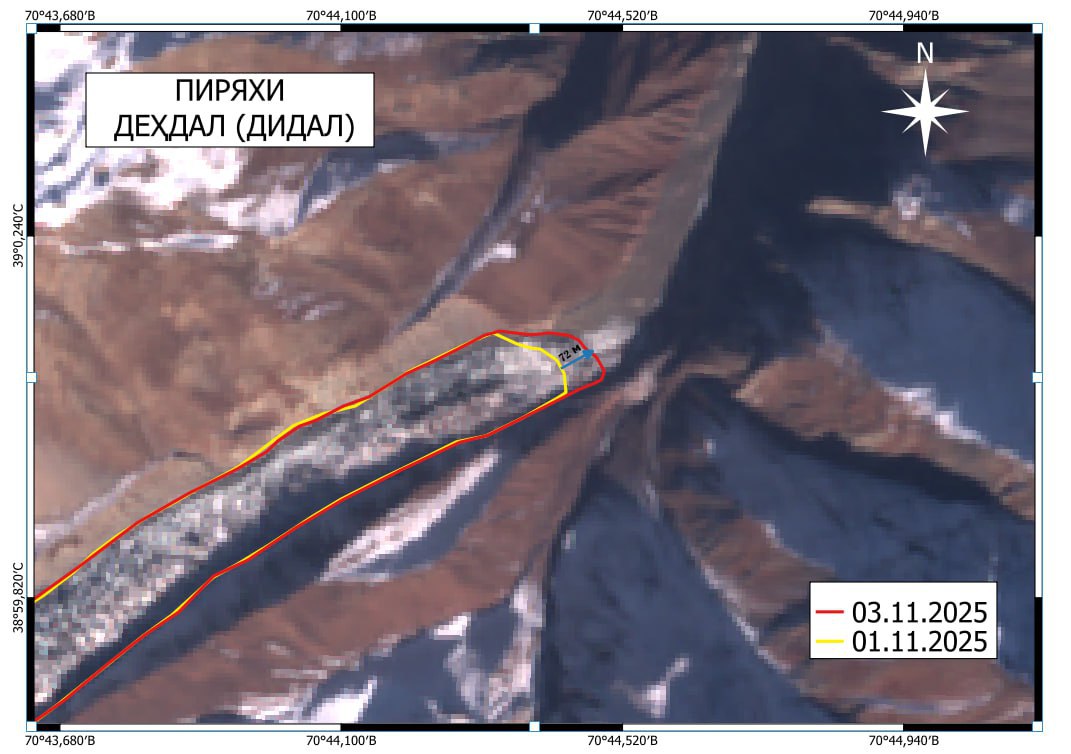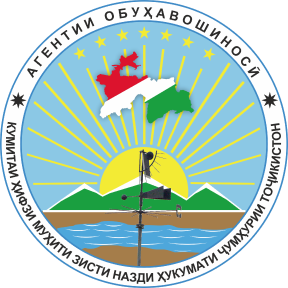Climate change is one of the most important and most acute problems of our time, having an increasingly noticeable negative impact on both natural systems and socio-economic activities of the republic. This process has various causes and includes both natural and anthropogenic factors resulting from human economic activity.
The effects of climate change are manifested in an increase in the average temperature of the planet, a change in precipitation, an increase in the frequency and intensity of natural phenomena, as well as in the degradation of natural ecosystems.
Due to rising air temperatures in the summer and autumn of this year, the Didal glacier in the Surkhob river basin of the Sloboda district began moving on September 19, and then again on October 25, 2025.
On October 27 of this year, during research and expedition work by specialists of the Glaciology Center, the Agency for Hydrometeorology of the Committee for Environmental Protection under the Government of the Republic of Tajikistan, it was found that a large mass of ice with a length of 1300-1500 m, a width of 170-200 m and a height of 25-50 m broke off from the Didal glacier, which moved at a speed of 6 m/s at a distance of 5100-5133 m.
According to the analysis of satellite images for the period from November 1 to November 3, 2025, the glacier is still in an unstable state and has moved down by 72 m on average over the past three days.
Taking into account the weather conditions in the region and the earthquake that occurred on November 3, 2025, the current state of the glacier is assessed as unpredictable. Its dynamics are regularly monitored using satellite models.
Satellite observations show that the glacier remains in an unstable state, and its movement continues. This situation creates the risk of glacial lakes forming and possibly bursting, changes in the composition of river waters, a threat to the infrastructure of the underlying territories, impacts on drinking and agricultural water sources, and increases the likelihood of natural disasters, including mudslides and landslides.
The movement of the Didal Glacier is another warning to society and responsible structures about the need to coordinate scientific, managerial and political actions in the field of climate change adaptation and glacier conservation in Tajikistanс
05.11.2025


